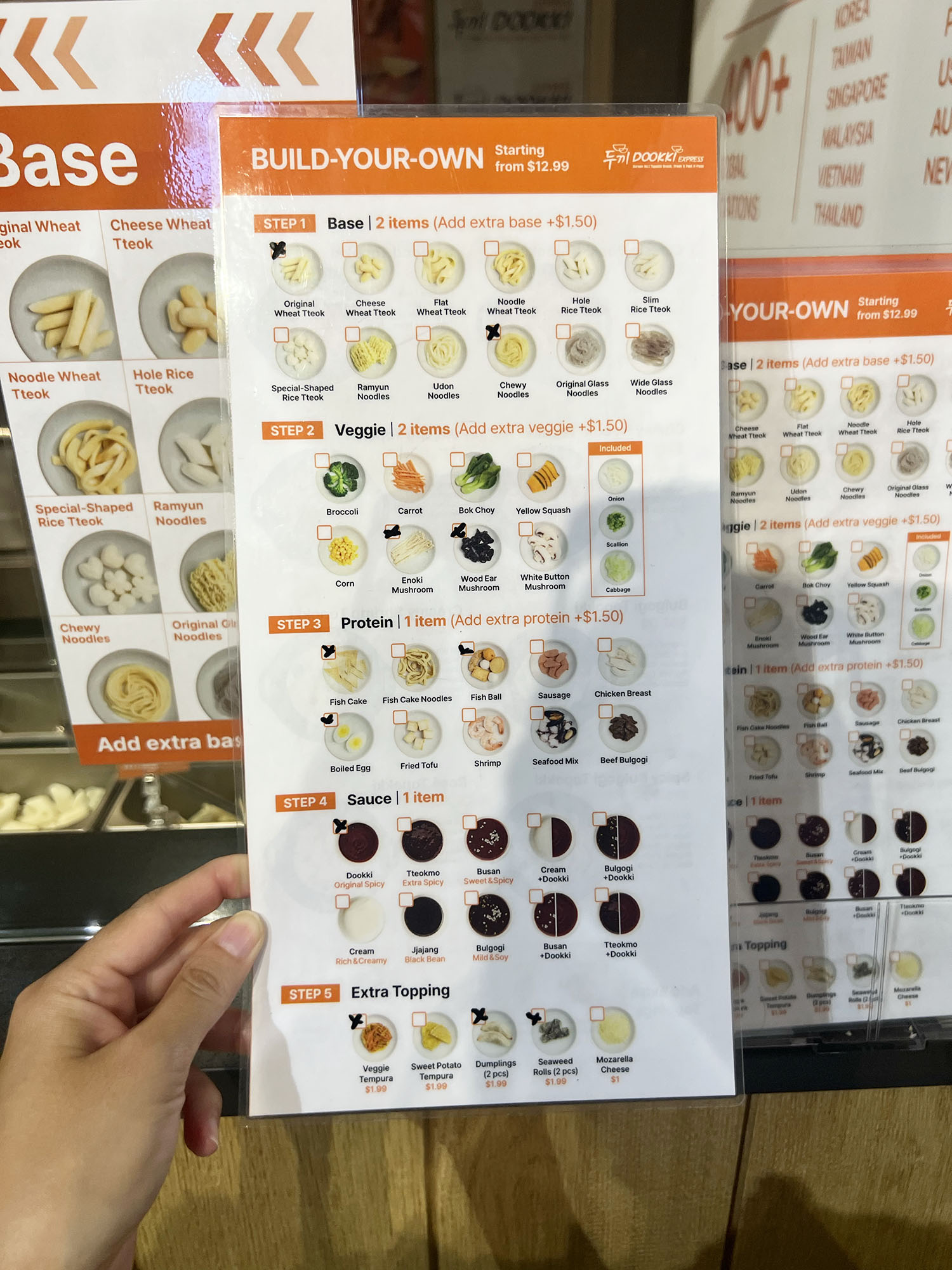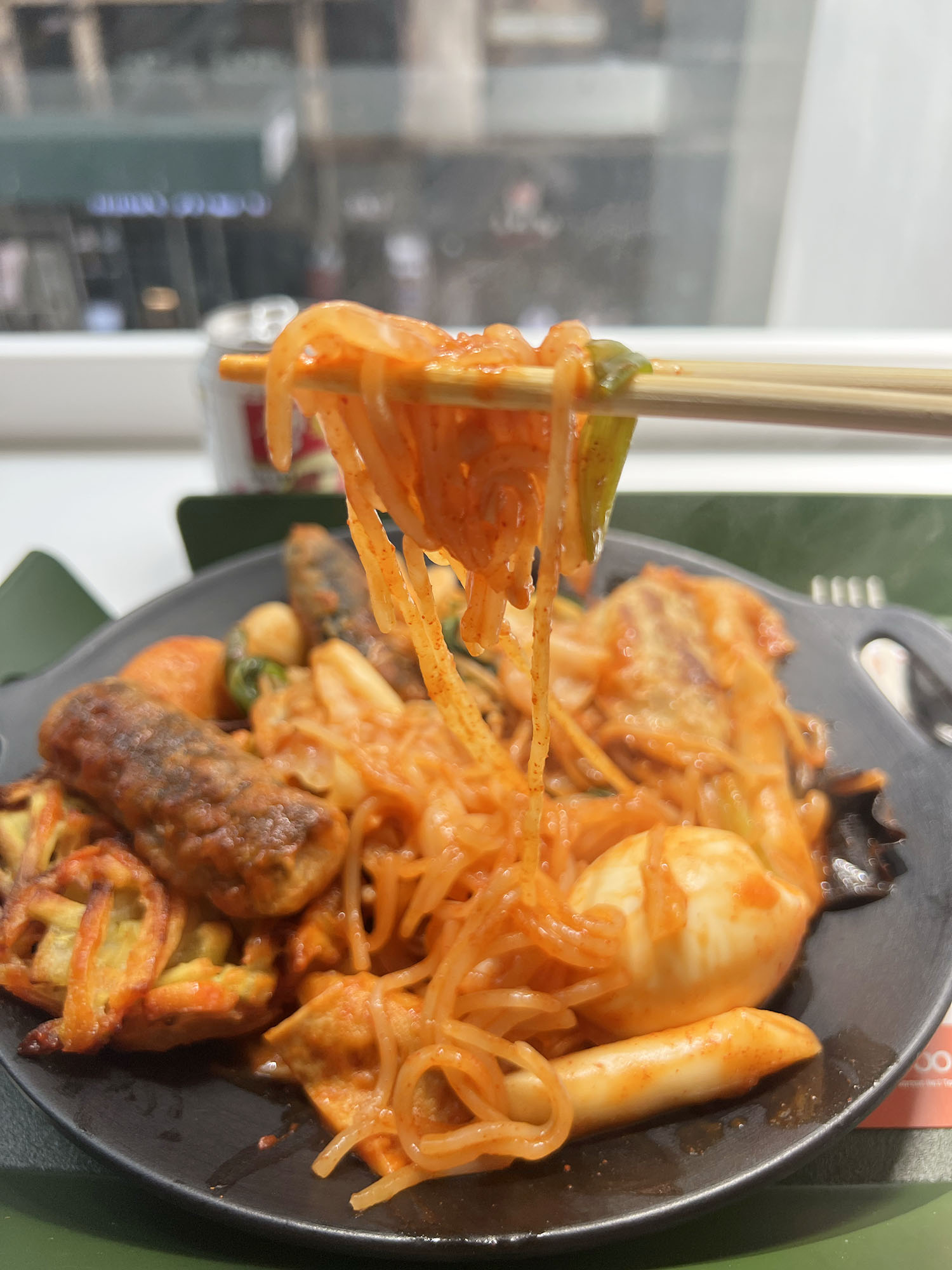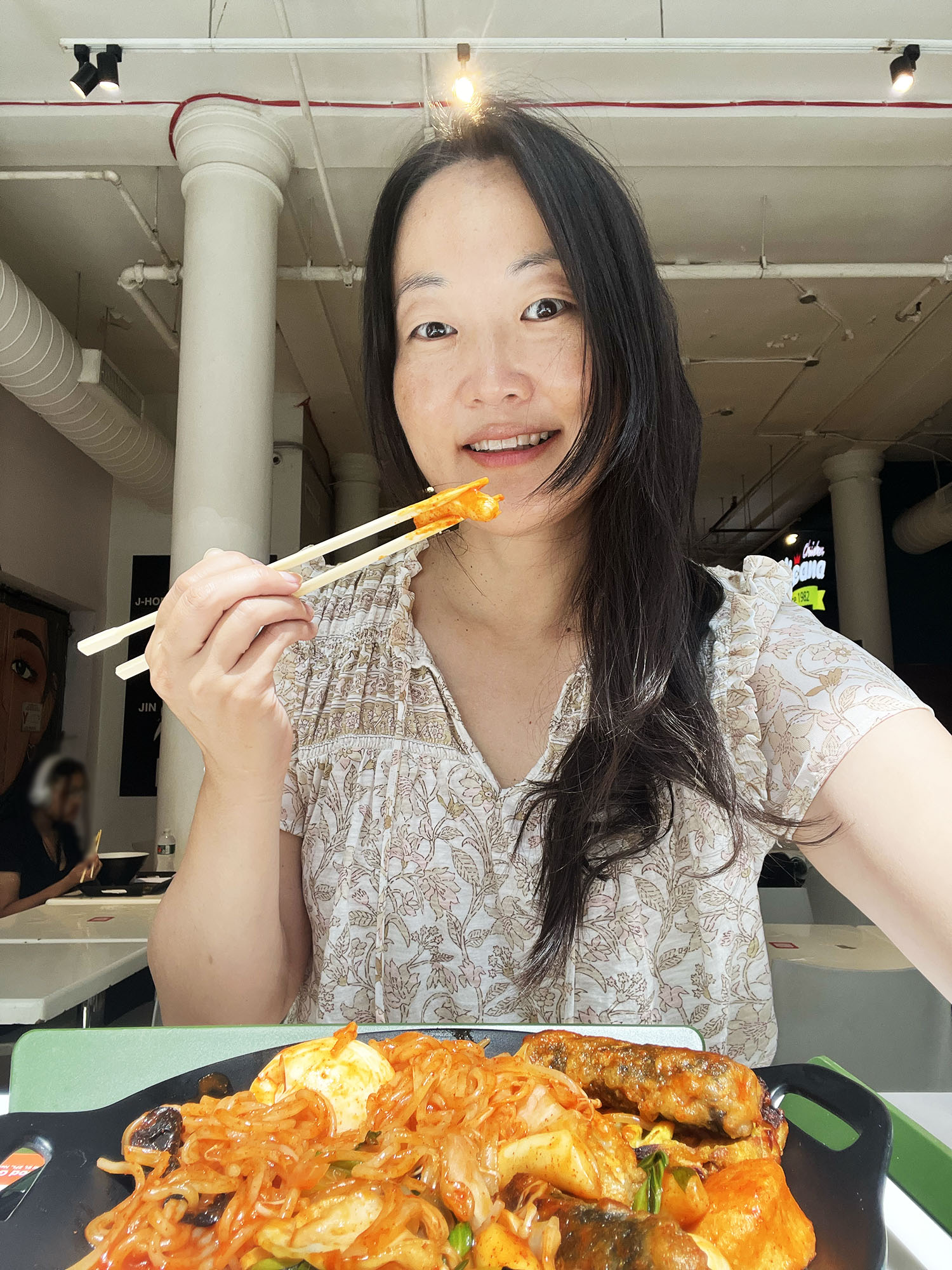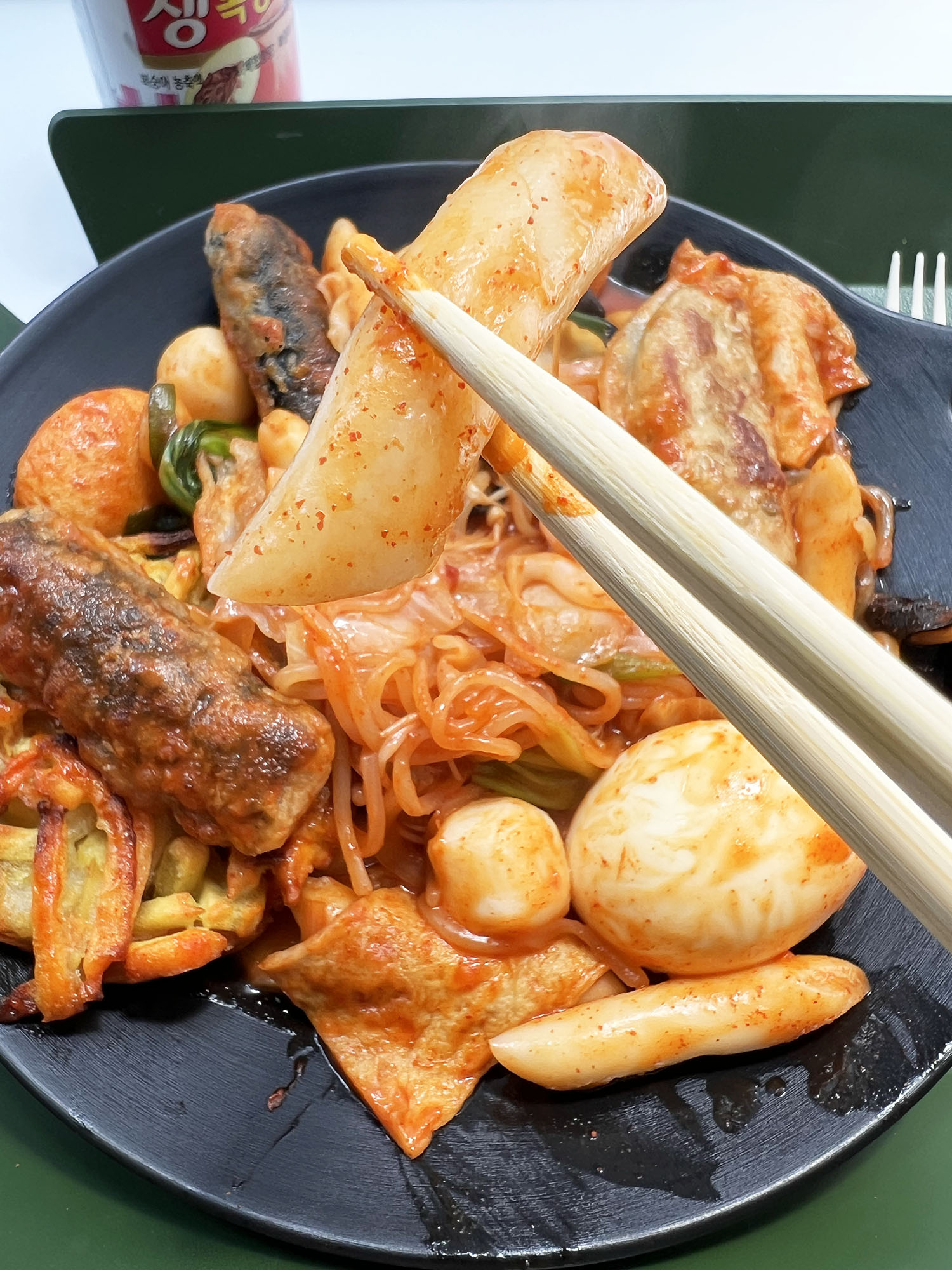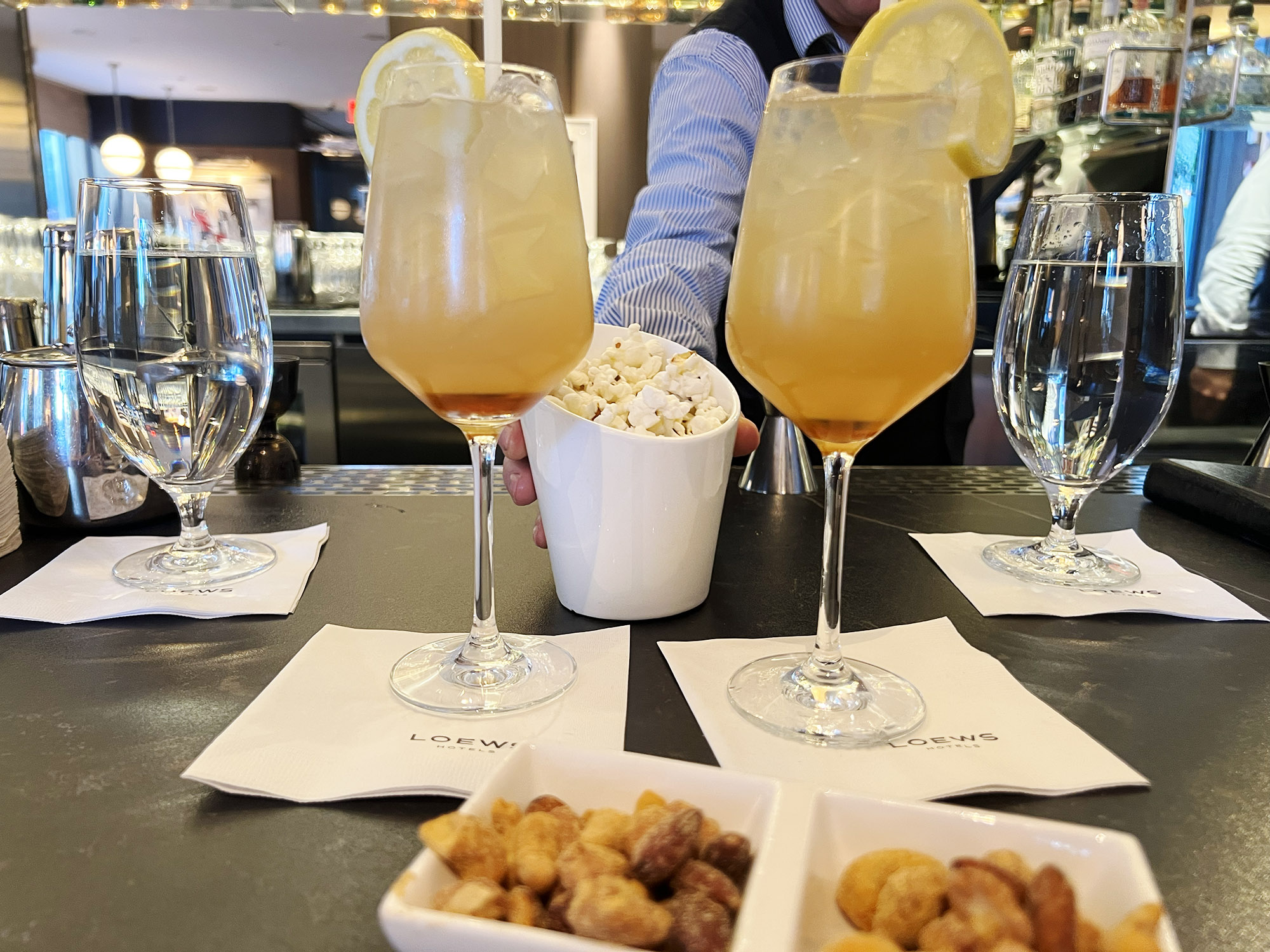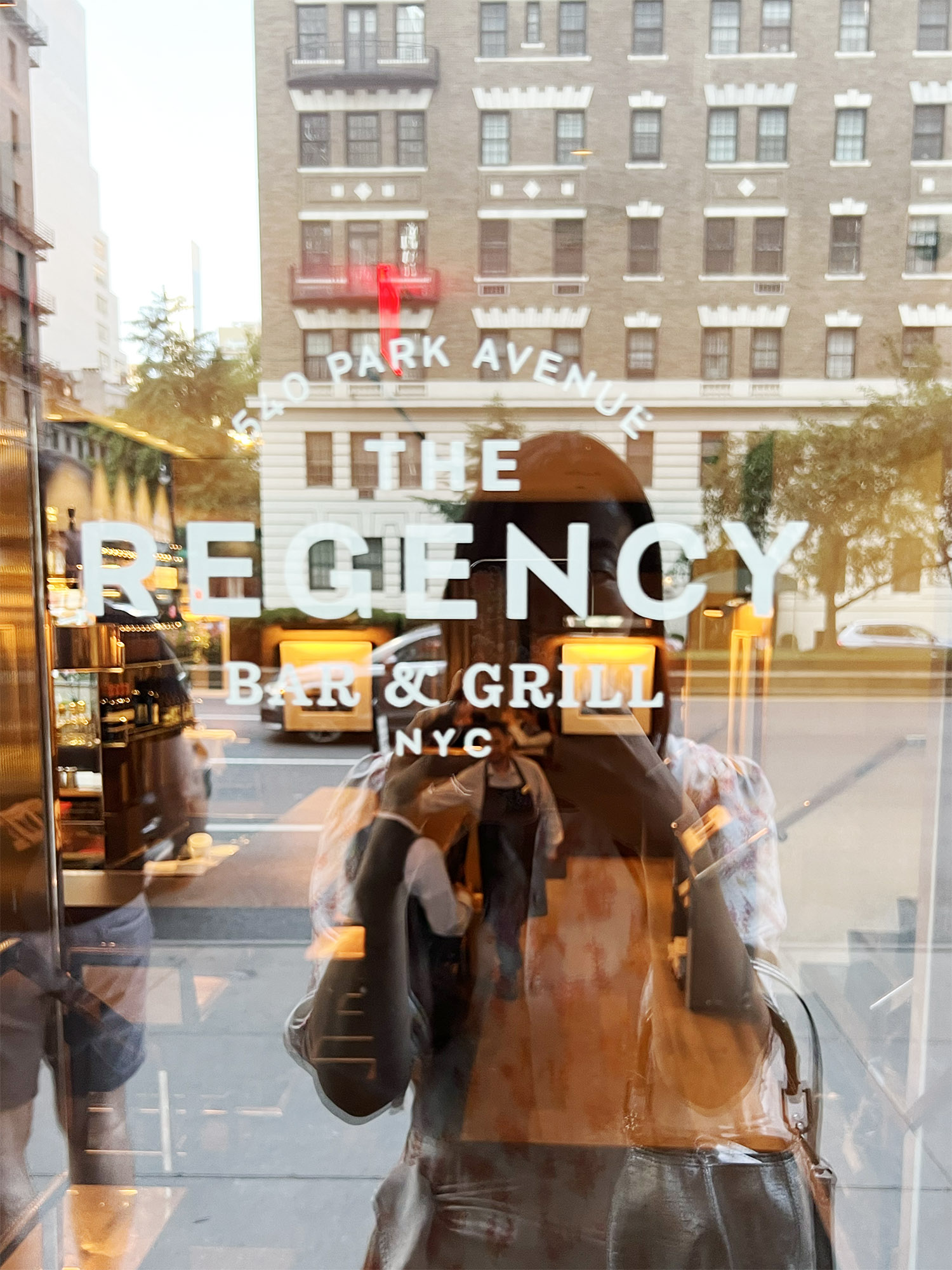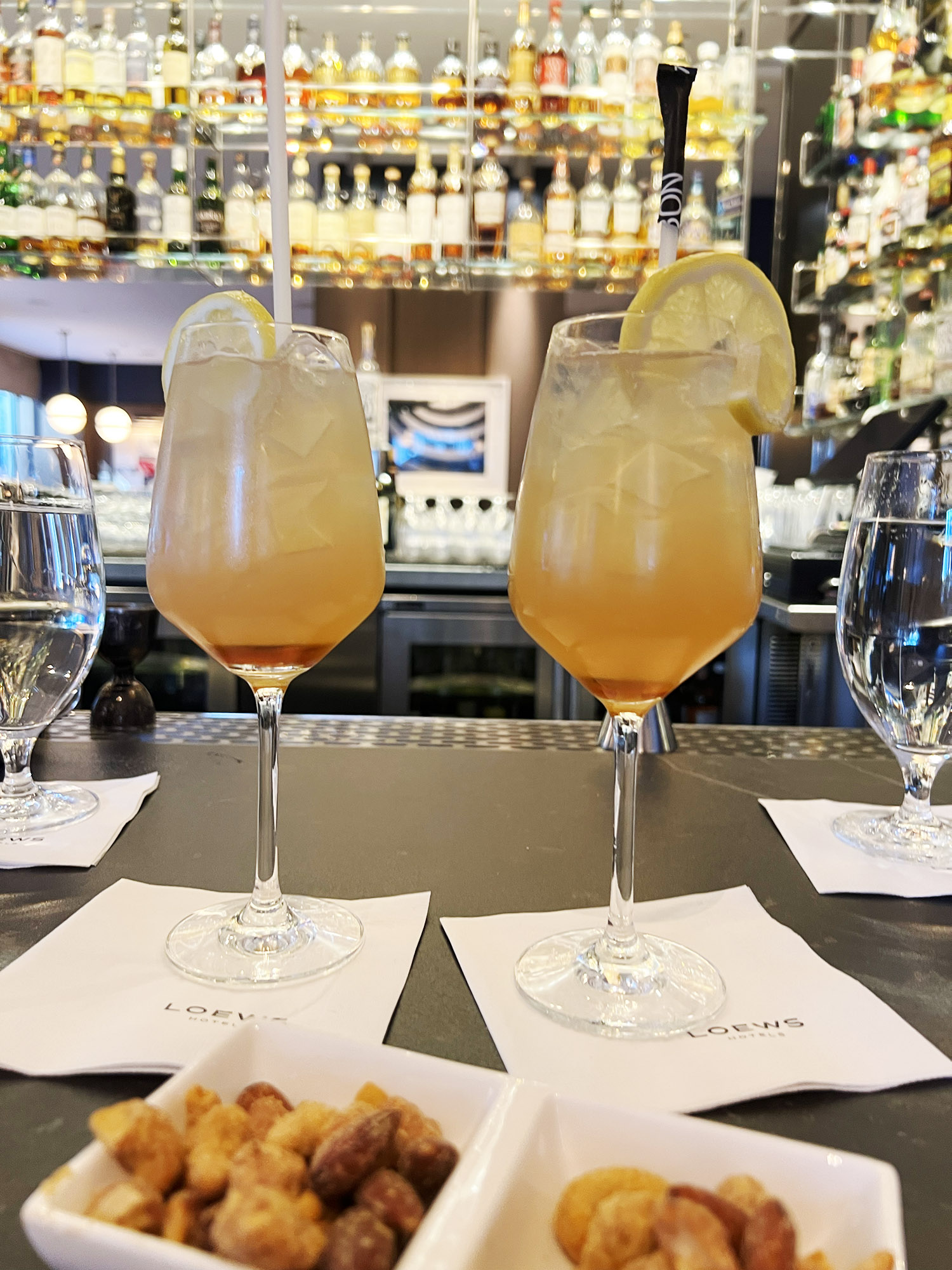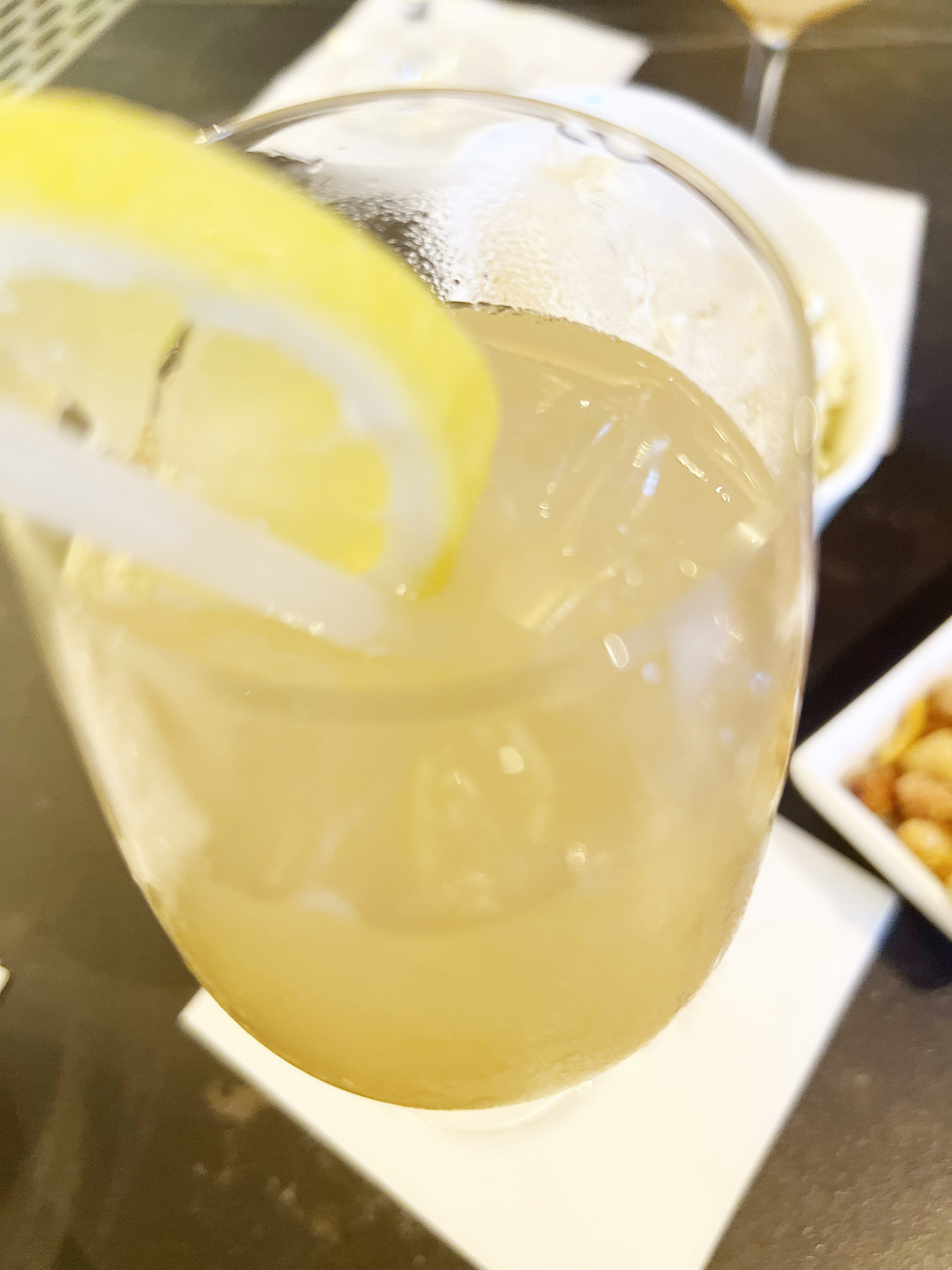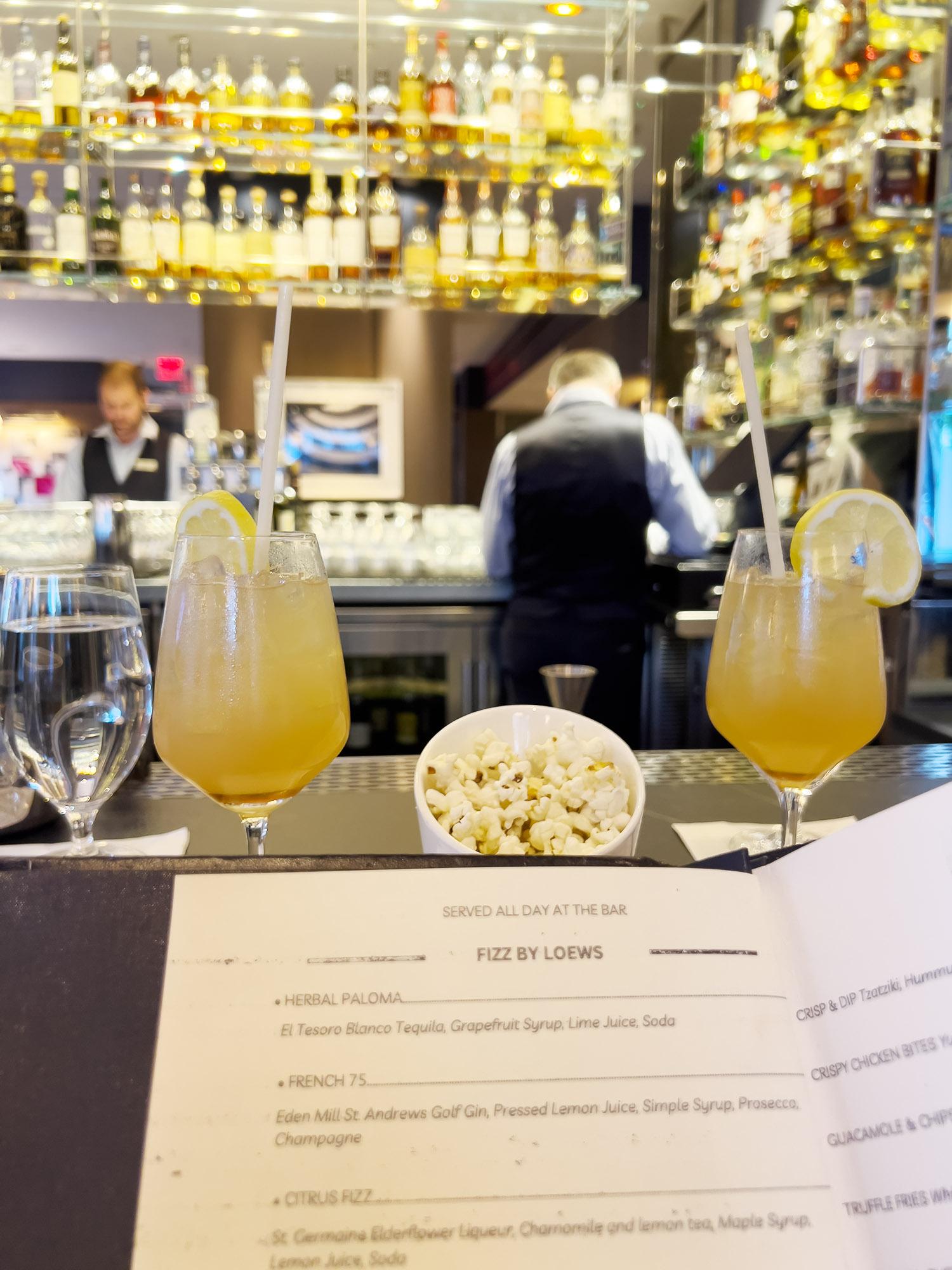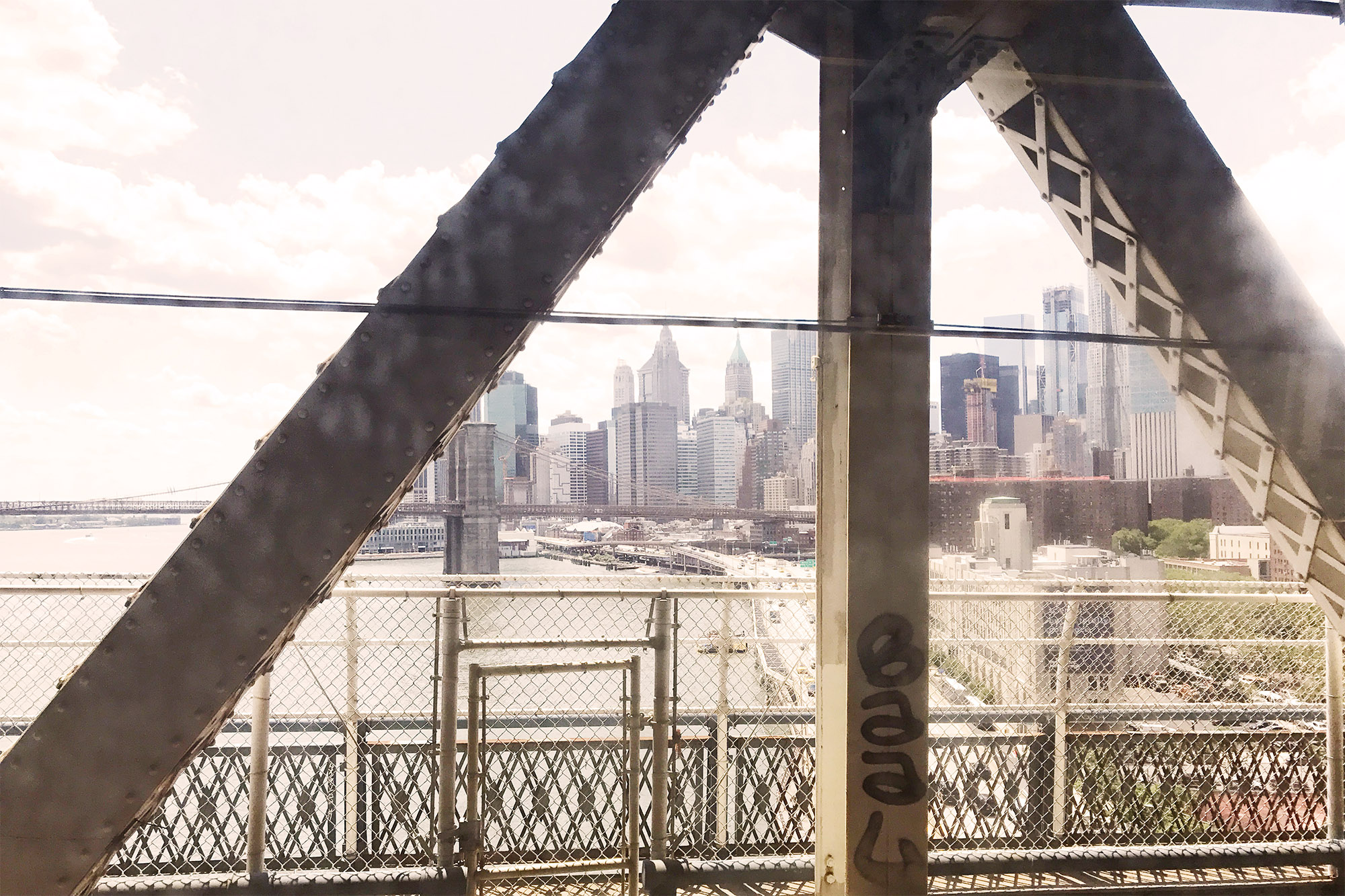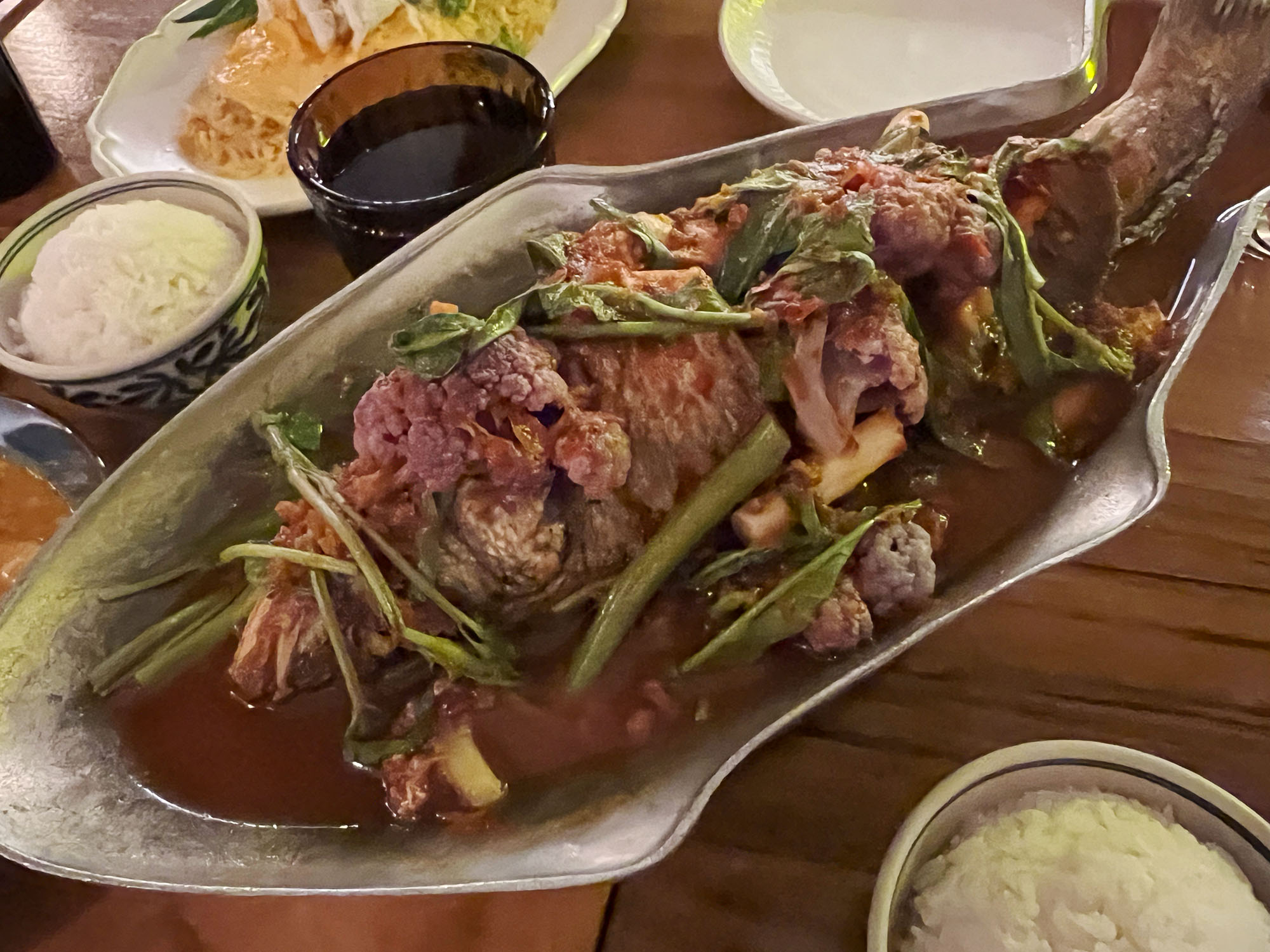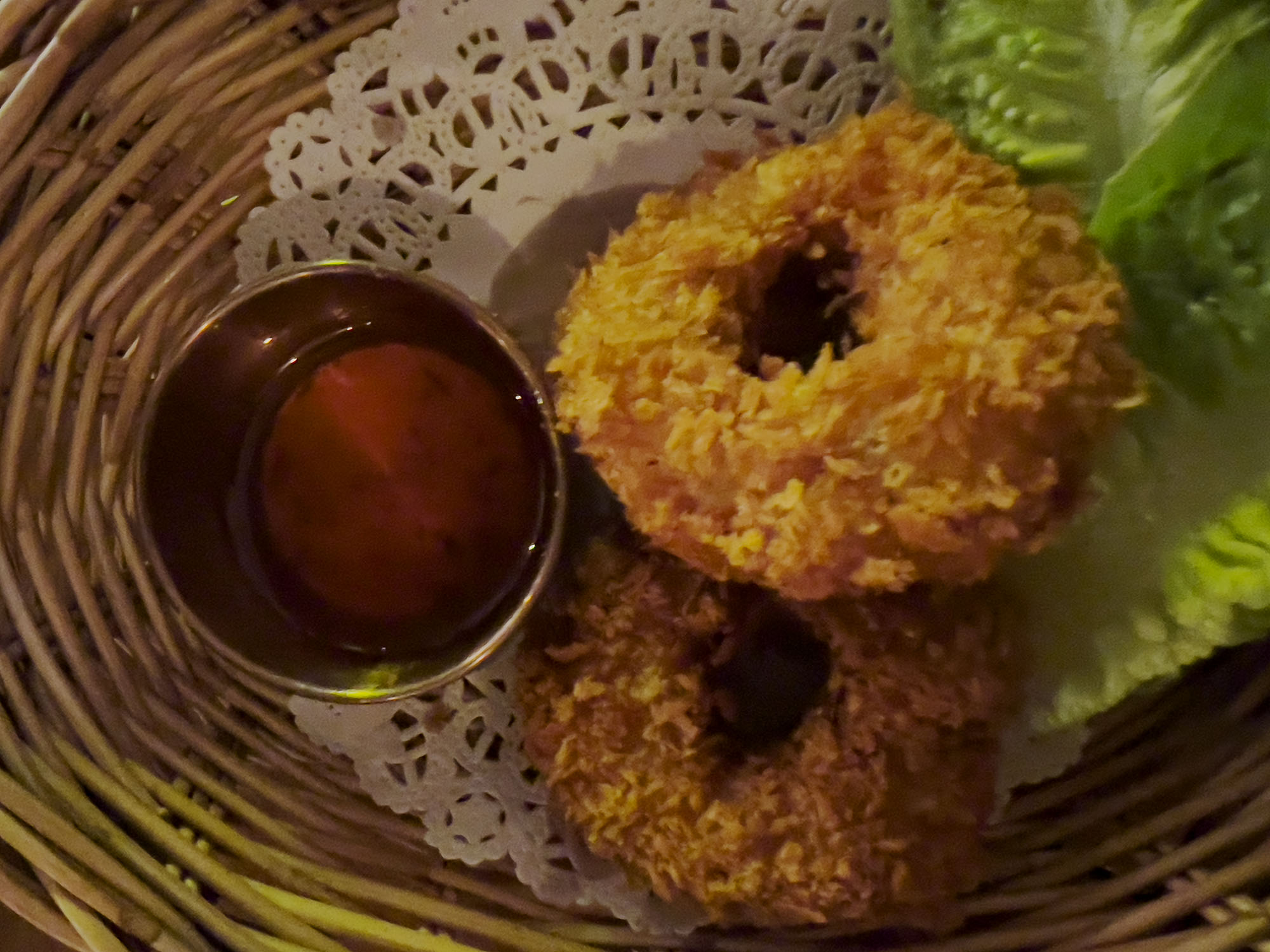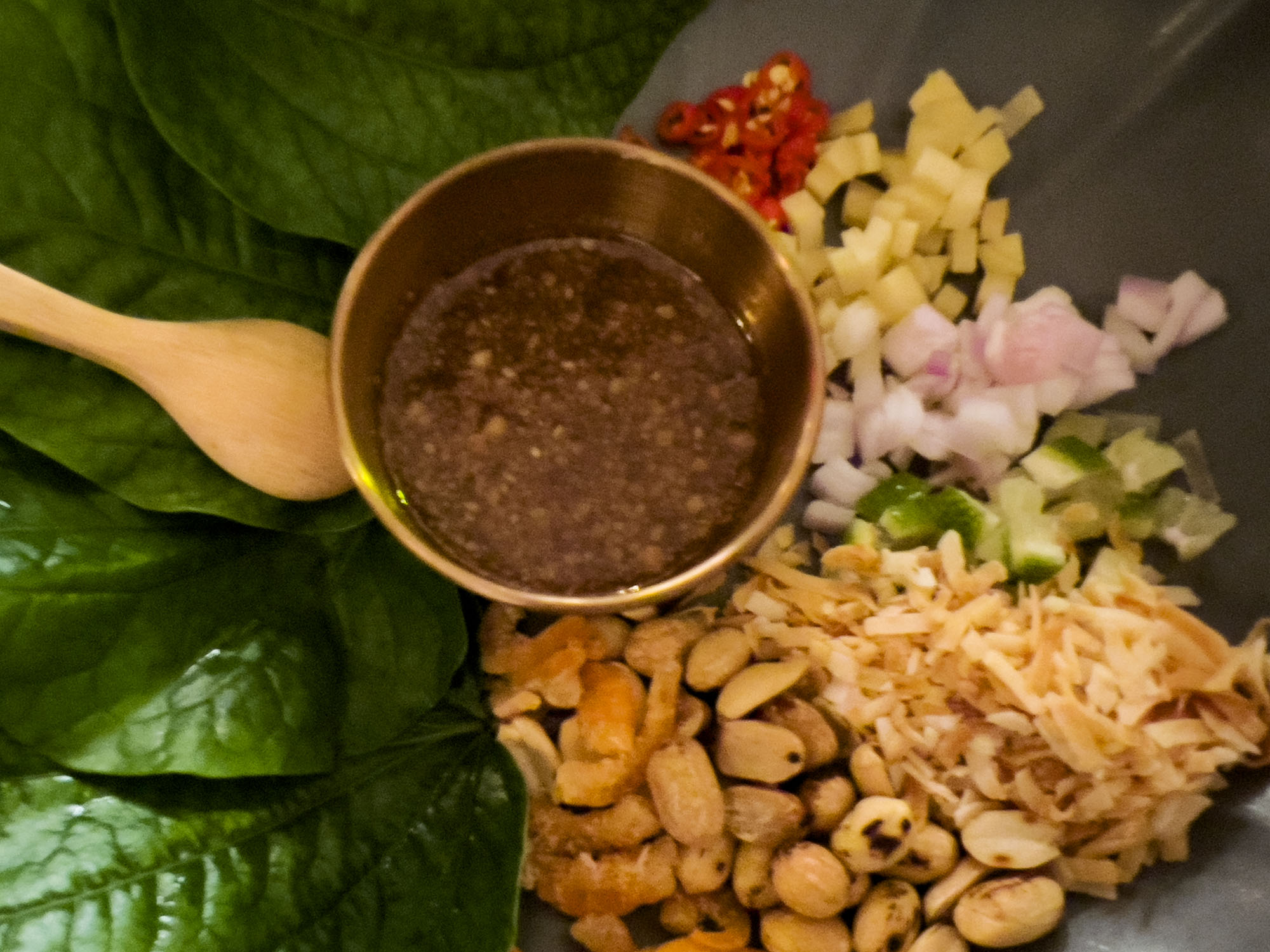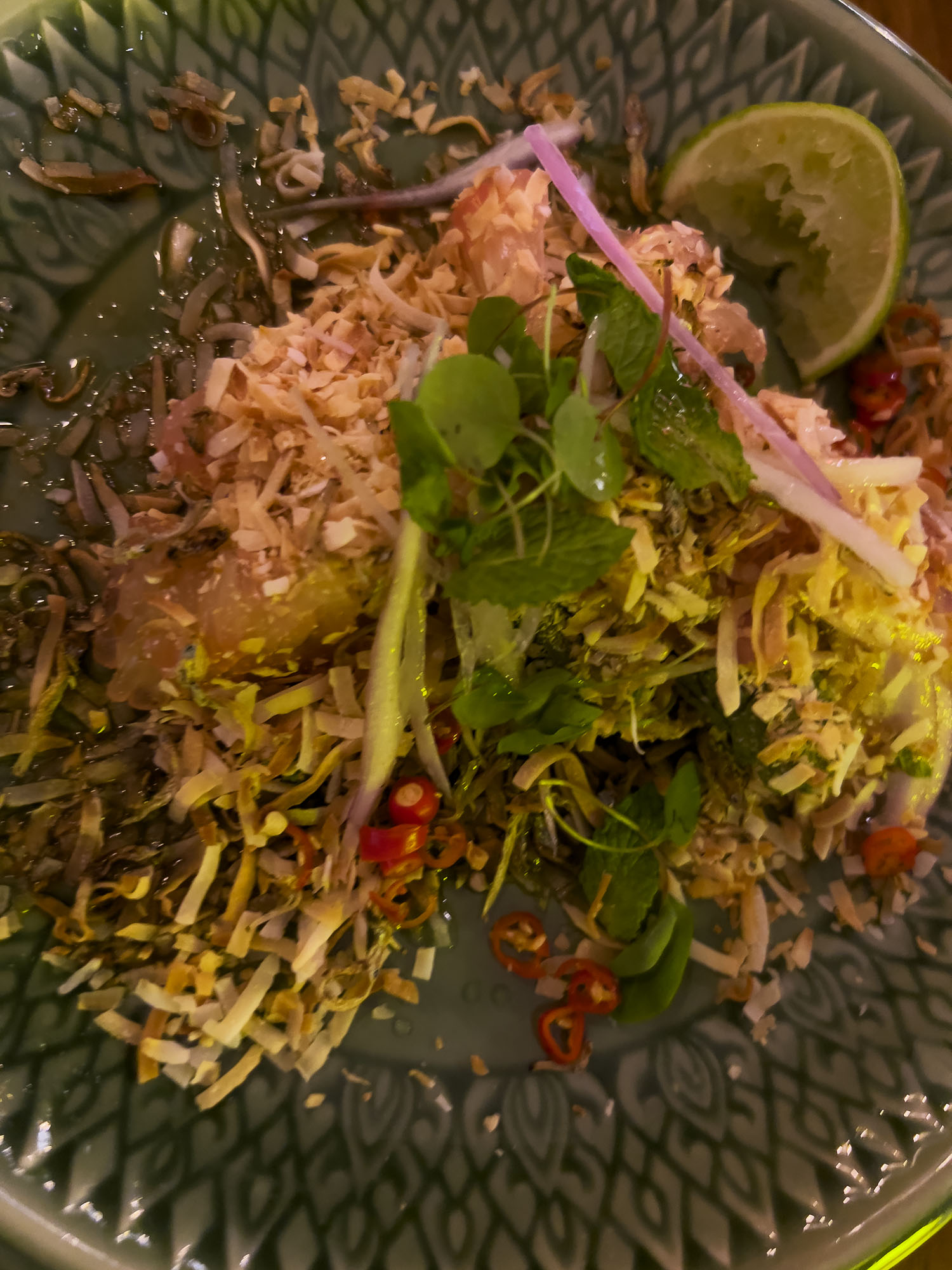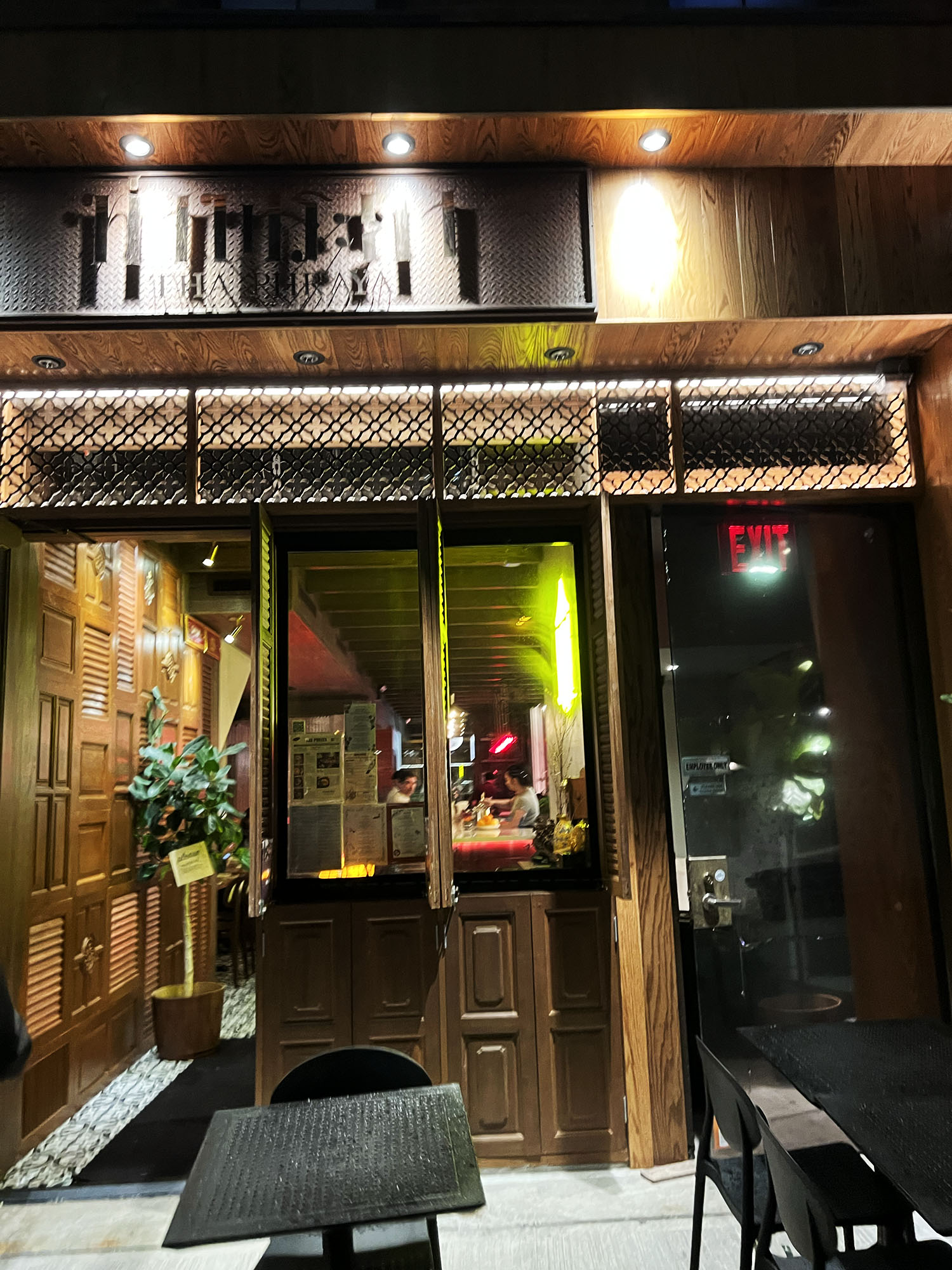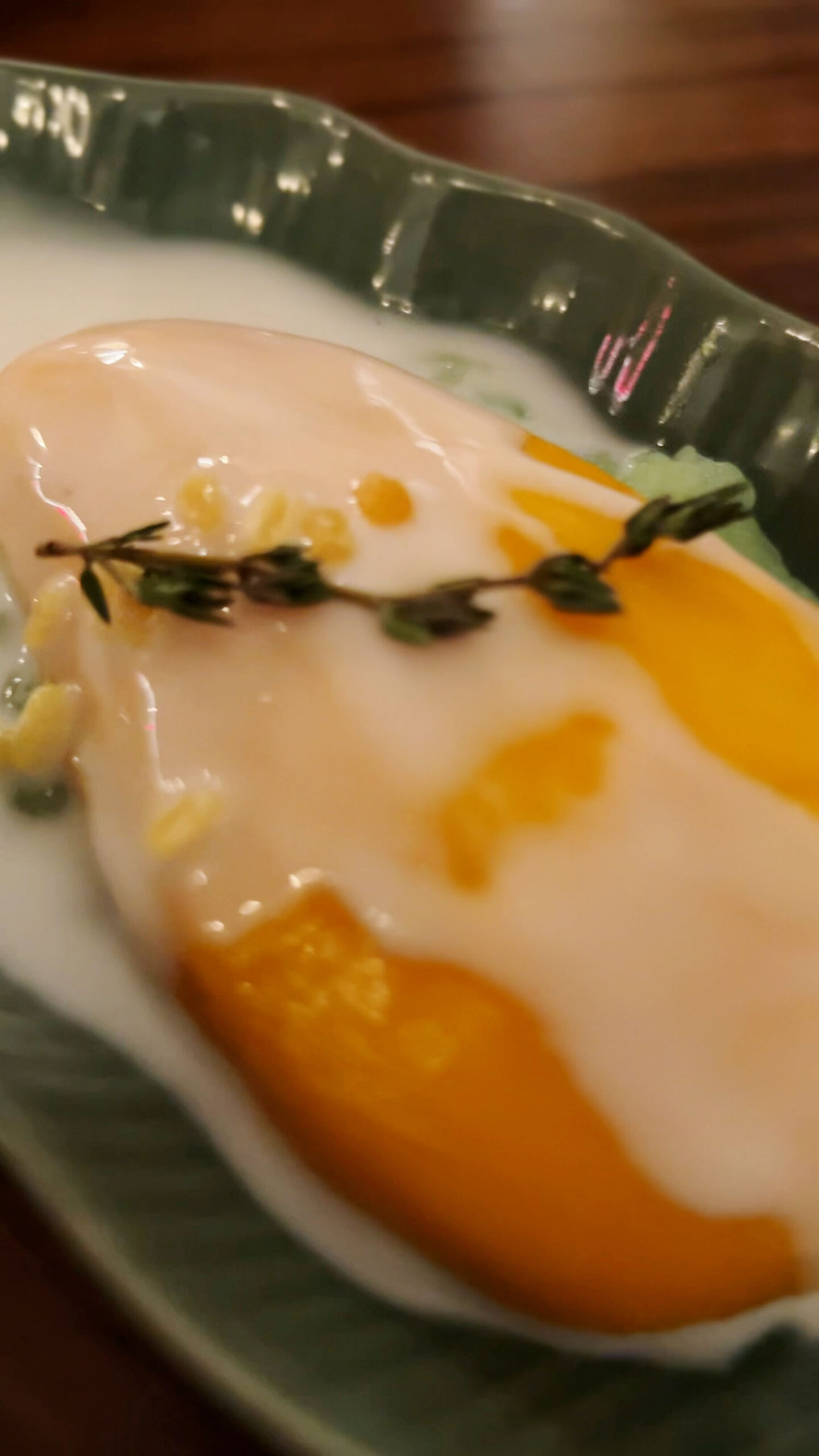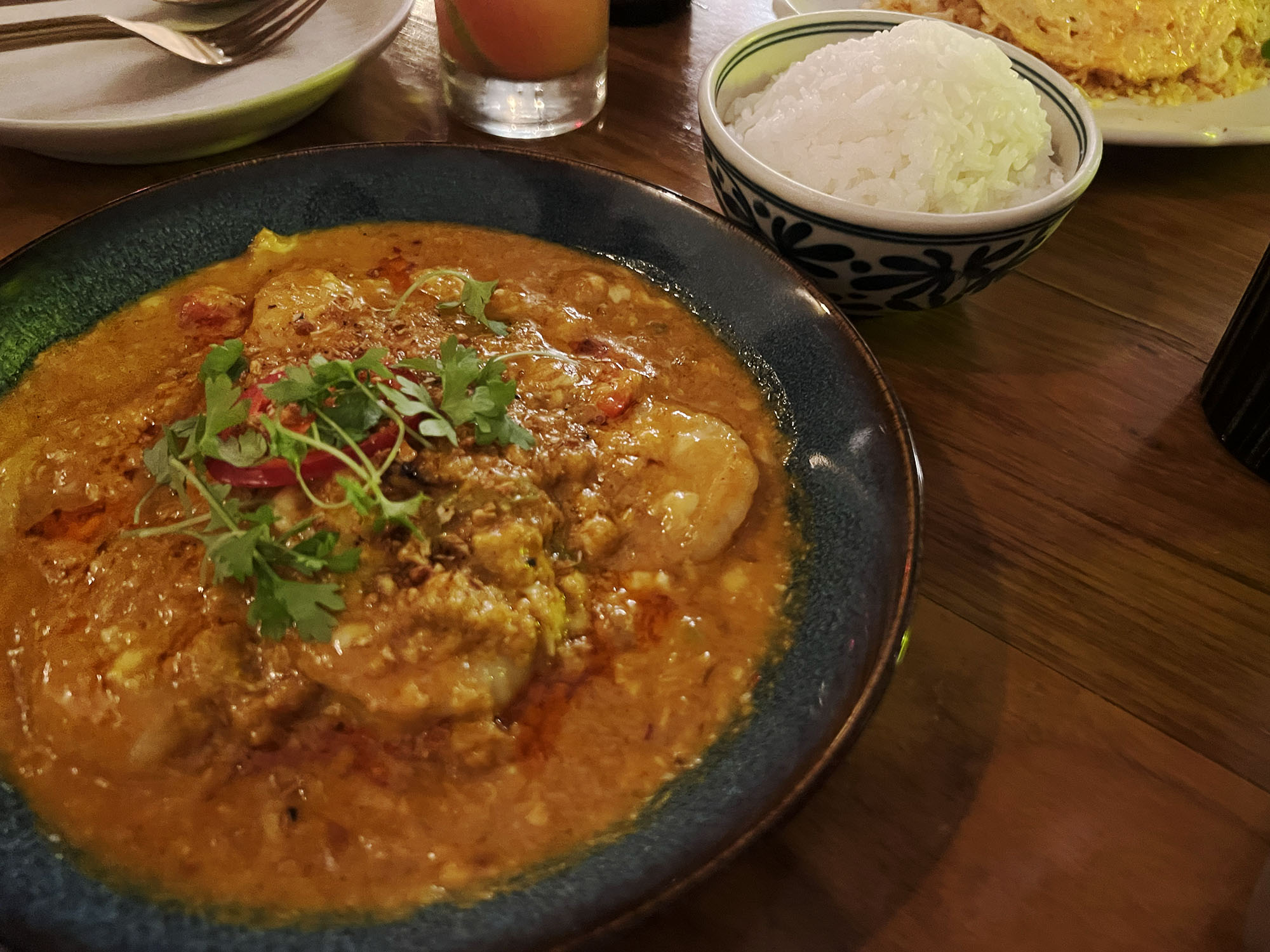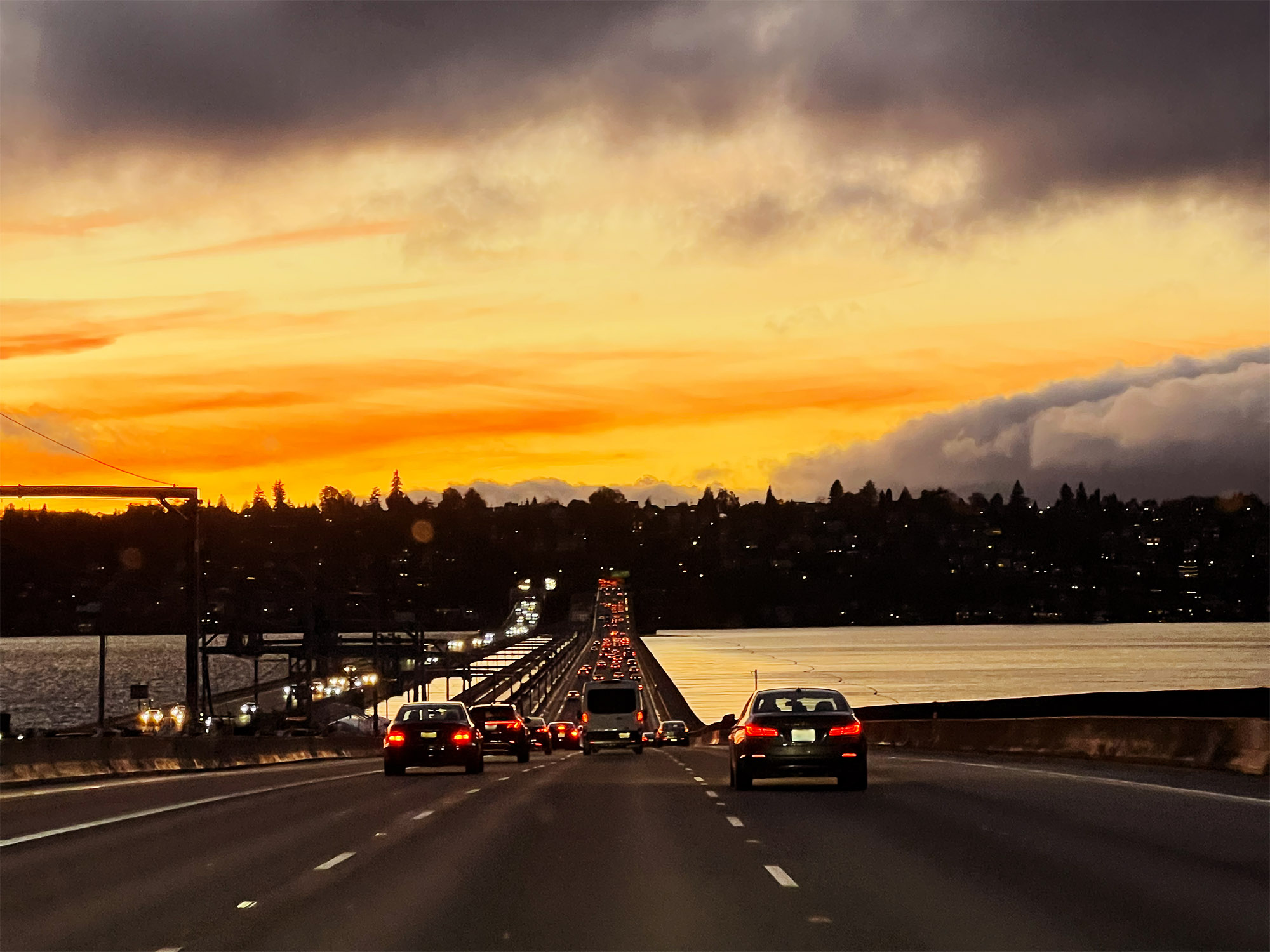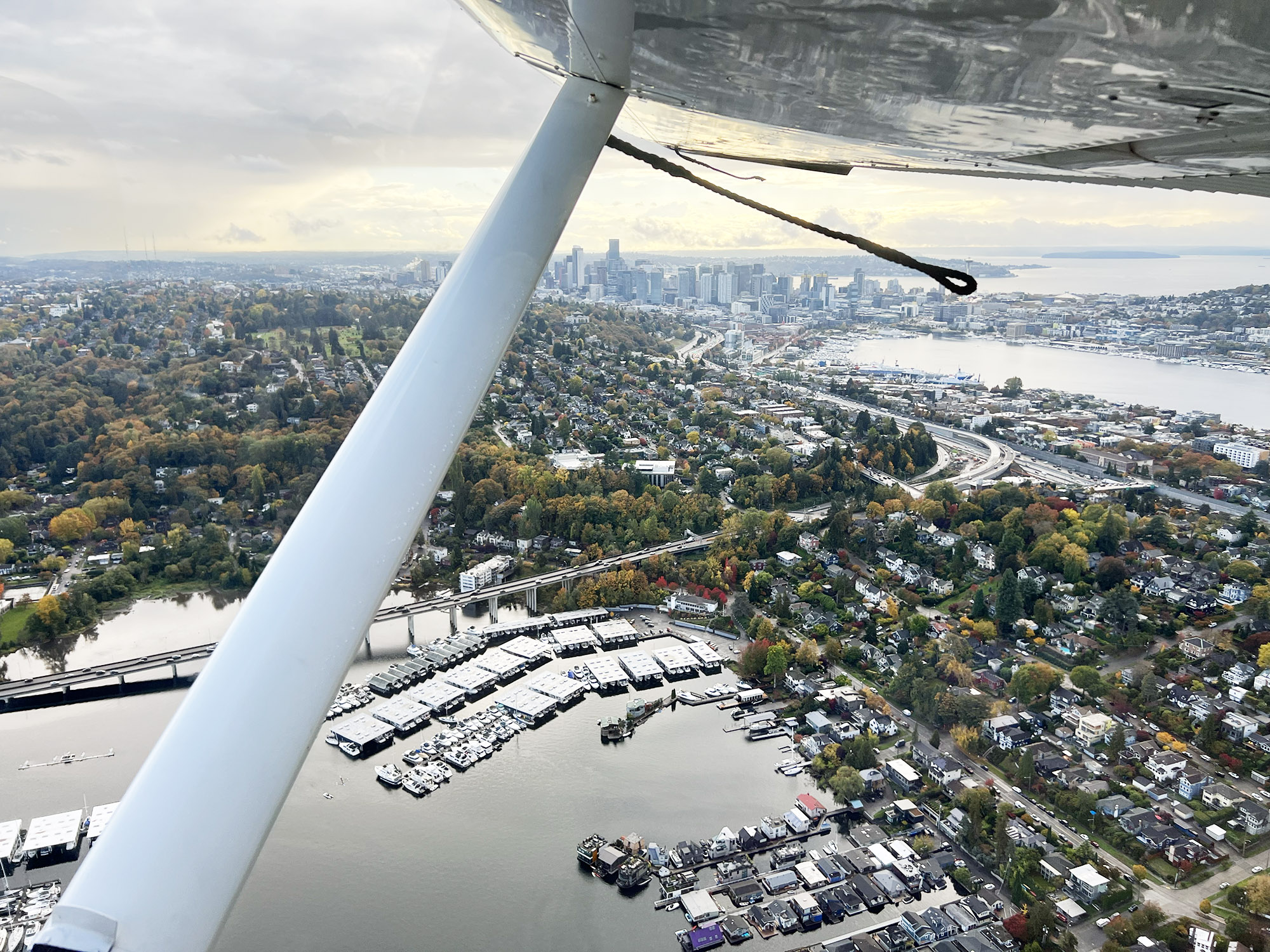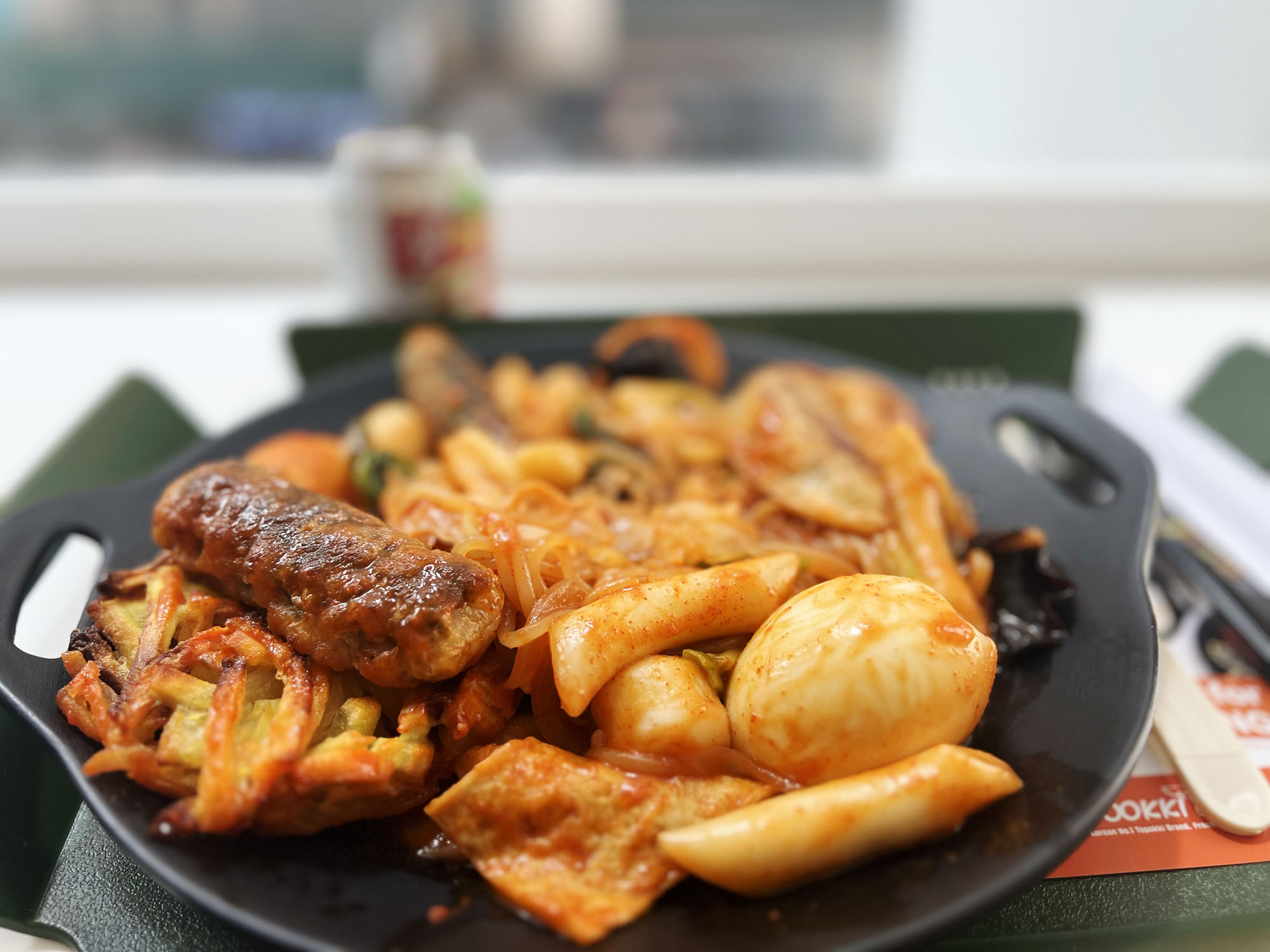
I love tteokbokki, so when I was invited to check out Dookki’s new spot in Koreatown, of course I said yes. Dookki is a Korean chain specializing in tteokbokki, those wonderfully chewy rice cakes served in a glossy, spicy red sauce.
In Korea, the Dookki restaurants are run as AYCE. You get a pot of broth at your table and then help yourself from a long lineup of toppings: different kinds of tteok, noodles, fish cakes, vegetables, even tempura. At Dookki in New York City, the setup is more like fast food. You either pick from preset combinations or build your own by checking off the toppings you want on the order sheet.
I went for the build-your-own and chose fish balls, fish cake, mushrooms, bok choy, rice cakes, egg, noodles…well, everything! There was so much going on in the bowl that the tteok (rice cakes) were almost hidden underneath it all. I chose the original Dookki spicy sauce, which turned out milder than I expected, so next time I’ll probably try Tteokmo, their extra spicy version.
Tteokbokki is true comfort food to me. I just love those chewy rice cakes, and I never get tired of them. I can eat them year-round, no matter the mood. While I still prefer eating tteokbokki from a tiny tent restaurant in Seoul, Dookki is a solid option when the craving hits in the middle of Manhattan. The portions are big, and one order is easily enough for two or even three people to share, which makes it a really cheap meal if you’re with friends.
You’ll find Dookki inside Food Gallery 32, which has quickly become one of my favorite Koreatown food spots. The food hall is always bustling, and has a great selection of stalls serving all kinds of Korean fast food and desserts.
By the way, “Dookki” means “two meals” in Korean. The name comes from the original concept in Korea, where you’d start with tteokbokki and then, when just a little sauce was left in the pot, add rice to make bokkeumbap (fried rice) to finish the meal. Maybe not the luckiest brand name in English, but I guess Dookki so well-known in Korea that they kept it, even for the New York City branch:)
My Guide to Korean Restaurants in New York City
Dookki, Food Gallery 32, 11 W 32nd St fl 2, New York, NY 10001, United States
